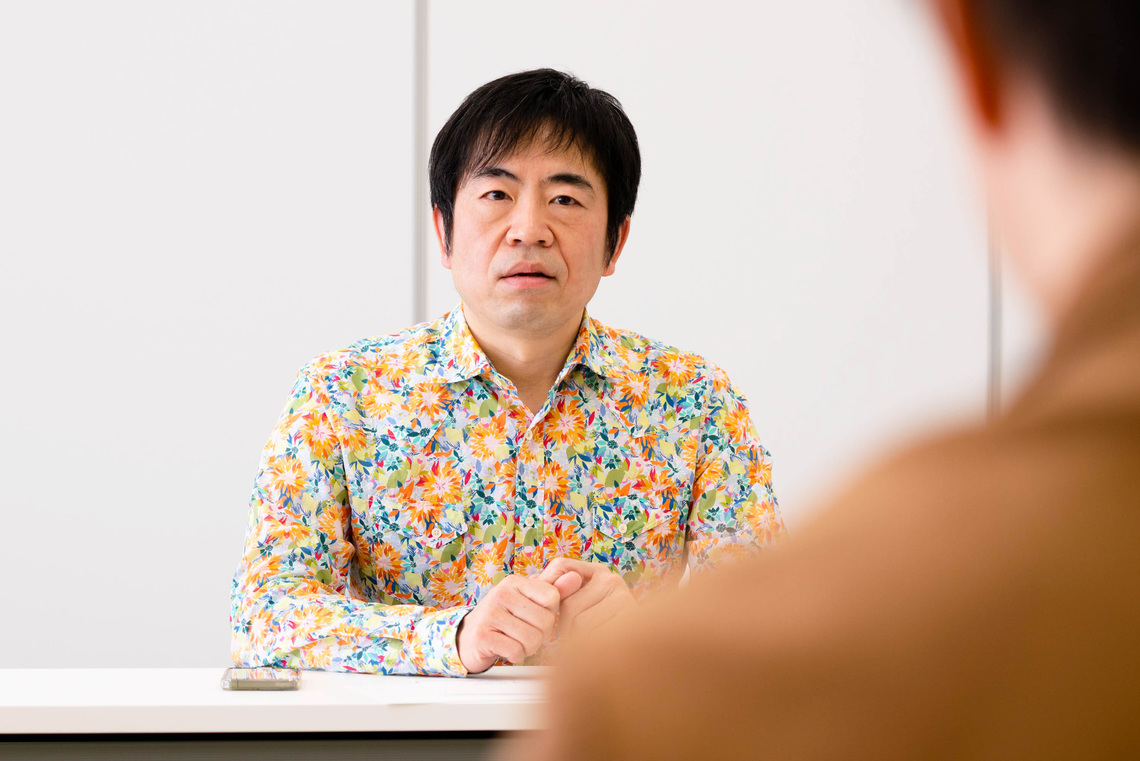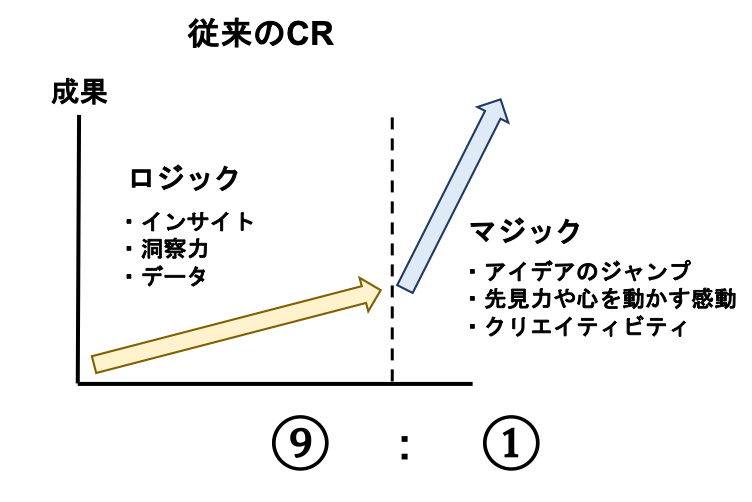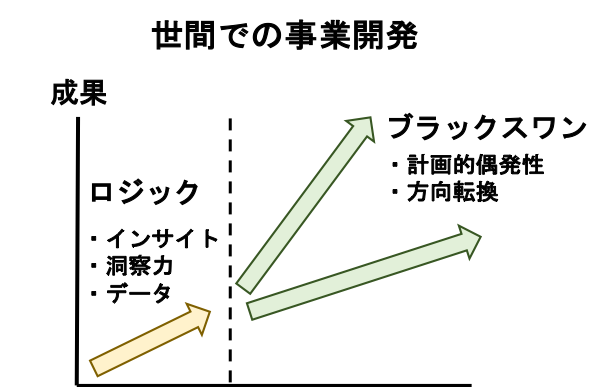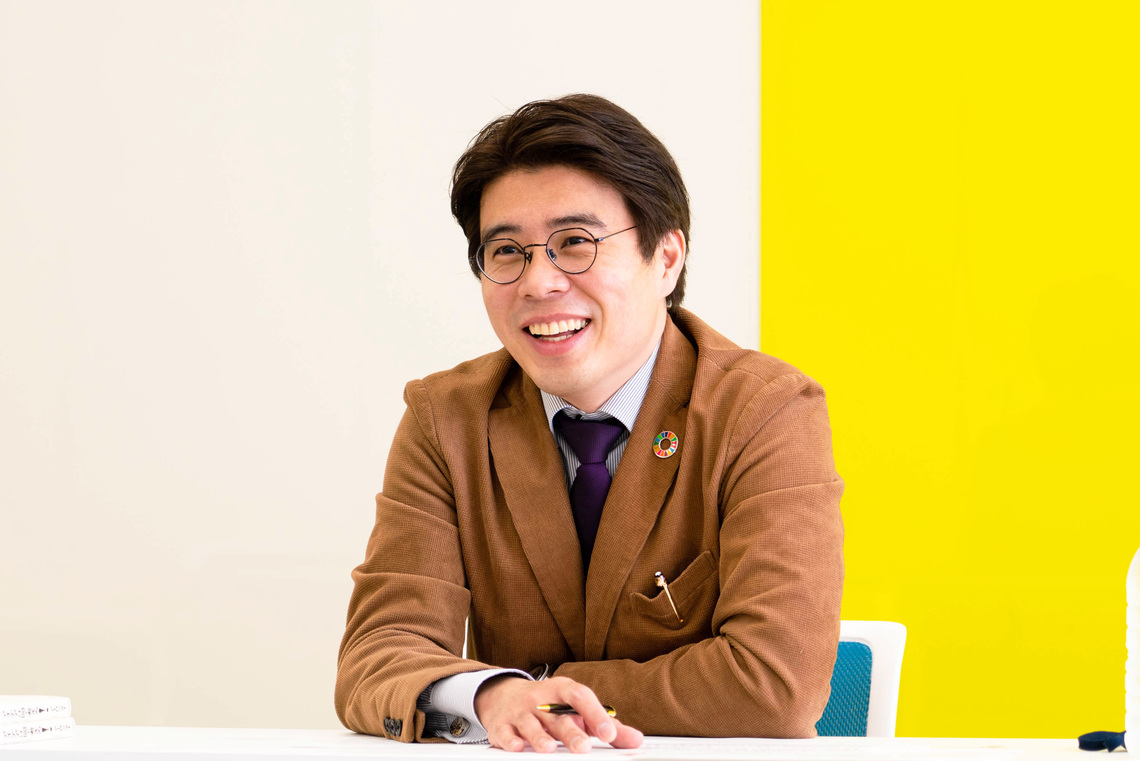This series explores the potential for idea generation through dialogues with experts, starting from Dentsu Inc. Creative Planner Aaron Zoo's book " Think in Diagrams! " published in October 2021.
This installment features a conversation with Yasuharu Sasaki, Chief Creative Officer (CCO) at Dentsu Inc., whom Aaron deeply respects as his "mentor and benefactor." They discuss the role and value of ideas and creativity in business development.

(From left) Aaron Zu, Yasuharu Sasaki
Creativity is 90% logic and 10% magic
Aaron: 'Think in Diagrams!' addresses how creativity can transform business, keeping Dentsu Inc.'s Business Transformation (BX) initiative in mind. As CCO, I believe you are leading business transformation centered precisely on creativity. I apologize for sharing something personal, but I met Mr. Sasaki when I was serving as an external advisor to a foreign startup. He has been a mentor and benefactor who gave me much advice even after I joined Dentsu Inc., so it's an honor to speak with him in this setting.
Sasaki: Thank you, Aaron. Your background is unique, and even back then, I found your perspective—slightly different from Dentsu Inc.—fascinating.
Aaron: Thank you. Today, I'd like to discuss "How does creativity drive business?" As traditional creativity continues to evolve under influences like digital, what do you think remains crucial for creativity?
Sasaki: Well, what we should truly value in creativity is generating ideas that make people exclaim, "I never thought of that!" That's our pride and our raison d'être. It's about creating a powerful effect: making people in the world surprised, turning their heads, wanting to touch it, falling in love through that experience, and staying with it forever. That's the value of creativity, and I believe its essence remains unchanged whether in the digital realm or the business creation domain.
Aaron: I also constantly think, "If someone else has the same idea, it's over" when brainstorming (laughs). At the same time, I believe logic is indispensable for creating that "Wow, I never thought of that!" moment. In my mind, about 90% of an idea is built on logic.
Sasaki: I see. If you ask creators, many would probably say, "I don't think with logic, I think with magic." But looking back at past work, it's clear that creators unconsciously build logical calculations in their heads first, then add that final twist no one else would think of.
Aaron: Exactly. Within that 90% logic, they scatter that 10% magic—the leaps, foresight, and emotional impact. I think every creator does this.
Sasaki: Sometimes creators themselves don't even recognize their own logic as such, which leads to situations where they can't explain their ideas well to clients and the concepts get rejected. In that sense, Aaron's book seems like it could help creators explain their ideas to others by diagramming the logic they previously couldn't articulate.
Overcome the "Black Swans" You Face in Business Development with Magic!
Aaron: As a creative planner specializing in new business development, I'd say logic accounts for about 30% of the work, while the remaining 70% involves confronting unexpected "black swans." I call these Black Swans "planned serendipity." No matter what business you try to build, pivots are inevitable. That's precisely why the 30% logic and theory are crucial when discussing direction with executives and business development leaders.
Sasaki: I see. Contingency might be a perspective missing from traditional creative work. Of course, there's always an element of uncertainty with creative work until it's released, but it's highly calculated and not that contingent. Creators like that might feel lost at first when they enter the business development arena, where 70% of what happens is unpredictable.
Aaron: Precisely. Right now, at Dentsu Inc.'s BX, I feel creatives are moving closer to the business development domain. As traditional creative evolves into "X," is there a direction you're aiming for?
Sasaki: I see business transformation through creativity as a two-stage process. The immediate step is to consistently support executives in a world where 70% of outcomes are unpredictable. Creatives excel at empathizing with executives' challenges and visualizing their thoughts through words and visuals, so supporting leaders confronting black swans is something they can do right away.
The next stage we should aim for is propelling executives' decisions when facing black swans to the next level. If magic is the creator's specialty for making things leap, I believe we can also materialize and show a discontinuous future one step ahead within the business domain.
Aaron: So Dentsu Inc. BX is built on three elements: Logic, Black Swan, and Magic.
Sasaki: By clarifying the fog of Black Swan events, we reduce the unpredictable realm from 70% to 60%. That remaining 10% is where we create magic—that "I never imagined that!" moment. That, I believe, is the ideal form of business development made possible precisely because creatives exist.
Creators possess the power to imagine the future
Aaron: What kind of new challenges does the BX domain present for creators?
Sasaki: Creators have always been in the communication world, producing outputs no one else imagined. Why can they do this? Because creators understand what troubles people and what society discusses. However, traditional advertising is limited to outputs during a campaign period. With BX, the timeframe extends to six months, a year, two years... That's the new challenge for creators.
Of course, creators possess the "power to imagine the future." They excel at envisioning not just what people might want, but what could be even more exciting. If we can harness that power for BX, I believe we can create long-term leaps.
Aaron: Exactly. Business development truly has a long timeframe. The success rate for new ventures is only about 30% to begin with. Sometimes, if results don't show within a year, you can feel like an outsider within the company. It's crucial to provide solid support so that creators involved in BX don't experience the same feelings.
Sasaki: Advertising operates on a six-month cycle for results, so BX creative must fundamentally change the process and approach leading to output. Unless clients recognize the immense value created by staying committed for years, not just short-term, we can't achieve their business transformation.
(Continued in Part 2)














